
fine ceramics
Silicon Carbide (SIC) Ceramic Plate for Engineering Advanced Fine Ceramics
Item Number : KM-DG03
Price varies based on specs and customizations
- Material
- Silicon nitride
- Specification
- See the form

Shipping:
Contact us to get shipping details Enjoy On-time Dispatch Guarantee.
Why Choose Us
Reliable PartnerEasy ordering process, quality products, and dedicated support for your business success.
Application
Silicon nitride is a ceramic material with unique properties that find applications in various industries. Unlike other ceramics, it does not shrink during sintering. Silicon nitride has exceptional strength, especially in hot-pressed form, making it one of the hardest substances known. It and the wafer are important products derived from the material, a covalently bonded compound known for its high strength, low density and excellent temperature resistance. These properties make them ideal for applications where durability and high temperature resistance are critical.
- Bearing technology: Silicon nitride is used in bearing balls and rollers in automotive engineering as well as in bearing technology.
- Sealing use: sealing rings for various purposes.
- Engine components: Silicon nitride can be used in engine valves, turbocharger rotors and turbine blades.
- Molten Metal Handling: For handling molten metal.
- Thermocouple Sheaths: Thermocouple sheaths are made of silicon nitride for temperature measurement.
- Welding Tools and Fixtures: For welding jigs, fixtures and rollers.
- Nozzles and centering pins: Nozzles and centering pins in silicon nitride.
- Drawing Tools and Tube Forming Tools: For drawing tools and tube forming applications.
- High-performance cutting tools: Silicon nitride is used in the production of high-performance cutting tools and indexable inserts.
- Pipes and Tubes: It is applied in the manufacture of pipes and tubes.
- Special Applications in Mechanical Engineering: Silicon nitride is used in various special applications in mechanical engineering.
Silicon nitride plates are synthesized by different chemical reaction methods and are often used in the metallurgical industry. They have excellent thermal shock resistance, creep resistance, oxidation resistance, low thermal conductivity and high wear resistance. Silicon nitride plates can be used in the production of advanced ceramic tubes, bearing rollers, ceramic cutting materials, Cyrol bearing rollers, nozzles, seals, tube forming tools and special mechanical engineering applications.
Detail & Parts
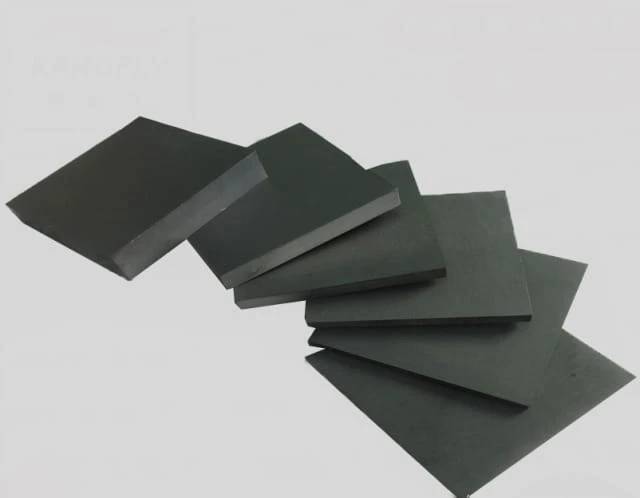

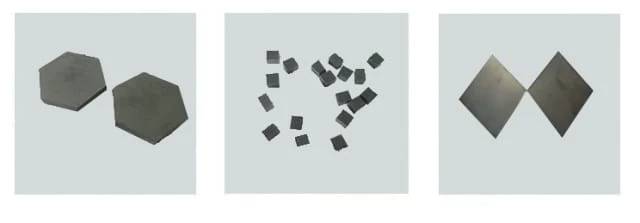

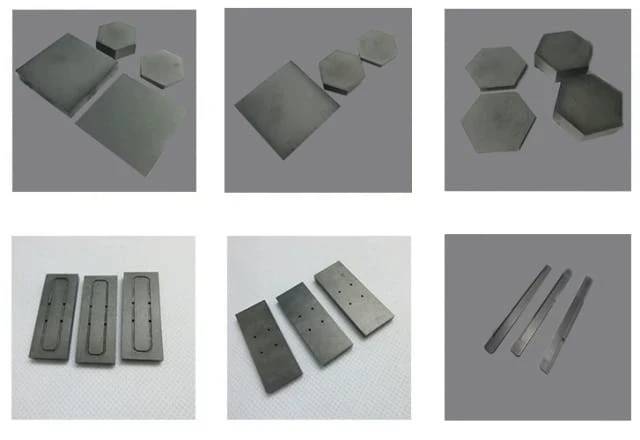
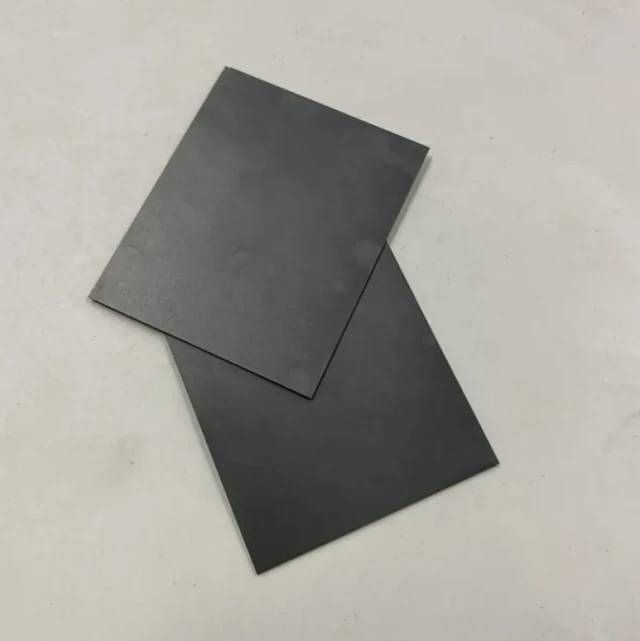
Technical specifications
| 25*50*5/6mm | 50*50*4/5mm | 100*100*4mm | 100*100*12mm | 150*150*6mm |
| 25*50*10/8mm | 50*50*6/8mm | 100*100*5mm | 100*100*15mm | 150*150*8mm |
| 50*50*1mm | 50*50*10mm | 100*100*6mm | 100*100*16mm | 150*150*10mm |
| 50*50*2mm | 100*100*2mm | 100*100*8mm | 100*100*30mm | |
| 50*50*3mm | 100*100*3mm | 100*100*10mm | 150*150*5mm |
The produce we show are available in different sizes and custom sizes are available on request.
Advantages
- High strength over a wide temperature range
- high fracture toughness
- High hardness
- outstanding wear resistance
- Low thermal expansion and high thermal conductivity
- good thermal shock resistance
- Good chemical and oxidation resistance
FAQ
What Are Advanced Ceramics?
What Are Engineering Ceramics?
What Are The Main Applications Of Fine Ceramics?
What Are The Main Types Of Advanced Ceramics?
What Are The Main Types Of Engineering Ceramics?
What Are The Main Types Of Fine Ceramics?
What Are The Applications Of Advanced Ceramics?
What Are The Applications Of Engineering Ceramics?
What Is The Principle Behind Fine Ceramics?
How Are Advanced Ceramics Manufactured?
How Do Engineering Ceramics Differ From Traditional Ceramics?
What Are The Advantages Of Using Fine Ceramics?
What Are The Advantages Of Using Advanced Ceramics?
What Are The Advantages Of Using Alumina Ceramics?
What Is The Difference Between Alumina And Zirconia Ceramics?
Why Are Zirconia Ceramics Preferred In Certain Applications?
Why Are Silicon Carbide Ceramics Used In High-temperature Applications?
What Makes Silicon Carbide Ceramics Suitable For High-temperature Applications?
What Makes Boron Nitride Ceramics Unique?
How Are Boron Nitride Ceramics Used In Electronics?
How Do Advanced Ceramics Contribute To Energy Efficiency?
What Is The Manufacturing Process Of Engineering Ceramics?
Can Engineering Ceramics Be Customized For Specific Applications?
4.9
out of
5
These Silicon Carbide plates are so tough! They're perfect for my lab's high-temperature applications.
4.8
out of
5
The quality of these plates is amazing. They've held up great in our lab's harsh conditions.
4.7
out of
5
The durability of these plates is impressive. They've lasted us for years without any signs of wear.
4.9
out of
5
These plates are a great value for the price. They're affordable and still top-notch quality.
4.8
out of
5
The delivery of these plates was incredibly fast. We received them within days of ordering.
4.7
out of
5
These plates are technologically advanced. They're made with the latest materials and techniques.
4.9
out of
5
The thermal shock resistance of these plates is excellent. They can withstand extreme temperature changes without cracking.
4.8
out of
5
These plates are incredibly wear-resistant. We've used them for months and they still look new.
4.7
out of
5
The chemical resistance of these plates is superb. They're not affected by acids, bases, or other corrosive chemicals.
4.9
out of
5
These plates are very strong and can withstand high temperatures.
4.8
out of
5
The plates are very durable and have lasted for a long time in our lab.
4.7
out of
5
These plates are a great addition to our lab. They're easy to use and clean.
4.9
out of
5
I would definitely recommend these plates to other labs.
REQUEST A QUOTE
Our professional team will reply to you within one business day. Please feel free to contact us!
Related Products

Silicon Carbide (SIC) Ceramic Sheet Wear-Resistant Engineering Advanced Fine Ceramics
Silicon carbide (sic) ceramic sheet is composed of high-purity silicon carbide and ultra-fine powder, which is formed by vibration molding and high-temperature sintering.
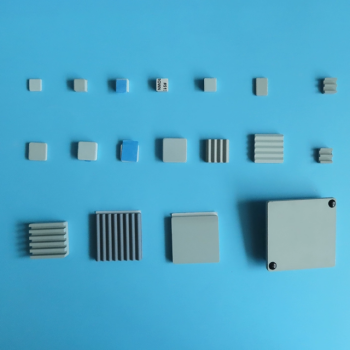
Silicon Carbide (SIC) Ceramic Sheet Flat Corrugated Heat Sink for Engineering Advanced Fine Ceramics
Silicon carbide (sic) ceramic heat sink not only does not generate electromagnetic waves, but also can isolate electromagnetic waves and absorb part of electromagnetic waves.

Precision Machined Silicon Nitride (SiN) Ceramic Sheet for Engineering Advanced Fine Ceramics
Silicon nitride plate is a commonly used ceramic material in the metallurgical industry due to its uniform performance at high temperatures.

Alumina ceramics have good electrical conductivity, mechanical strength and high temperature resistance, while zirconia ceramics are known for their high strength and high toughness and are widely used.

Zirconia Ceramic Gasket Insulating Engineering Advanced Fine Ceramics
Zirconia insulating ceramic gasket has high melting point, high resistivity, low thermal expansion coefficient and other properties, making it an important high temperature resistant material, ceramic insulating material and ceramic sunscreen material.

Precision Machined Zirconia Ceramic Ball for Engineering Advanced Fine Ceramics
zirconia ceramic ball have the characteristics of high strength, high hardness, PPM wear level, high fracture toughness, good wear resistance, and high specific gravity.
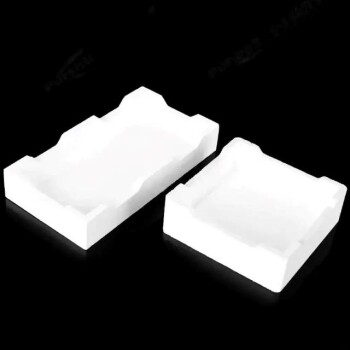
Advanced Engineering Fine Ceramics Alumina Ceramic Saggar for Fine Corundum
Alumina sagger products have the characteristics of high temperature resistance, good thermal shock stability, small expansion coefficient, anti-stripping, and good anti-powdering performance.

Precision Machined Yttria Stabilized Zirconia Ceramic Plate for Engineering Advanced Fine Ceramics
Yttrium-stabilized zirconia has the characteristics of high hardness and high temperature resistance, and has become an important material in the field of refractories and special ceramics.

High Temperature Wear-Resistant Alumina Al2O3 Plate for Engineering Advanced Fine Ceramics
High temperature wear-resistant insulating alumina plate has excellent insulation performance and high temperature resistance.

Advanced Engineering Fine Ceramics Boron Nitride (BN) Ceramic Parts
Boron nitride ((BN) is a compound with high melting point, high hardness, high thermal conductivity and high electrical resistivity. Its crystal structure is similar to graphene and harder than diamond.

Engineering Advanced Fine Ceramics Head Tweezers with Pointed Elbow Zirconia Ceramic Tip
Zirconia ceramic tweezers are a high-precision tool made of advanced ceramic materials, especially suitable for operating environments that require high precision and corrosion resistance. This type of tweezers not only has excellent physical properties, but is also popular in the medical and laboratory fields because of its biocompatibility.

In the journey of scientific exploration and industrial production, every detail is crucial. Our arc-shaped alumina ceramic crucibles, with their excellent high temperature resistance and stable chemical properties, have become a powerful assistant in laboratories and industrial fields. They are made of high-purity alumina materials and manufactured through precision processes to ensure excellent performance in extreme environments.

Precision Machined Yttrium Stabilized Zirconia Ceramic Rod for Engineering Advanced Fine Ceramics
Zirconia ceramic rods are prepared by isostatic pressing, and a uniform, dense and smooth ceramic layer and transition layer are formed at high temperature and high speed.

Advanced Engineering Fine Ceramics Aluminum Nitride (AlN) Ceramic Sheet
Aluminum nitride (AlN) has the characteristics of good compatibility with silicon. It is not only used as a sintering aid or reinforcing phase for structural ceramics, but its performance far exceeds that of alumina.

Engineering Advanced Fine Alumina Al2O3 Ceramic Crucible for Laboratory Muffle Furnace
Alumina ceramic crucibles are used in some materials and metal melting tools, and flat-bottomed crucibles are suitable for melting and processing larger batches of materials with better stability and uniformity.

Alumina ceramic screws are fastening components made of 99.5% alumina, ideal for extreme applications requiring excellent thermal resistance, electrical insulation and chemical resistance.

Alumina wear-resistant ceramic washer are used for heat dissipation, which can replace aluminum heat sinks, with high temperature resistance and high thermal conductivity.

Engineering Advanced Fine Ceramics Aluminum Oxide Al2O3 Heat Sink for Insulation
The hole structure of the ceramic heat sink increases the heat dissipation area in contact with the air, which greatly enhances the heat dissipation effect, and the heat dissipation effect is better than that of super copper and aluminum.

High Temperature Alumina (Al2O3) Furnace Tube for Engineering Advanced Fine Ceramics
High temperature alumina furnace tube combines the advantages of high hardness of alumina, good chemical inertness and steel, and has excellent wear resistance, thermal shock resistance and mechanical shock resistance.
Related Articles

Precautions for installing silicon carbide stick
Precautions for installing silicon carbide stic.

Isostatic Pressing of Ceramics: Process and Precision
When it comes to producing high-quality ceramic components, one of the most crucial processes is isostatic pressing. This technique ensures the uniformity and precision required for manufacturing ceramics used in various industries. Isostatic pressing involves carefully selecting the pressing powders and controlling the tools to achieve the desired uniformity. By understanding the process of isostatic pressing, manufacturers can ensure the production of ceramics that meet the strict standards of dimensional accuracy and performance.

The Role of Plasma in PECVD Coatings
PECVD (Plasma Enhanced Chemical Vapor Deposition) is a type of thin film deposition process that is widely used for creating coatings on various substrates. In this process, a plasma is used to deposit thin films of various materials onto a substrate.

The Benefits of Cold Isostatic Pressing
Cold Isostatic Pressing (CIP) is a process used to compact powders into a specific shape or size. This method involves subjecting the powders to high pressure, typically between 100 and 200 MPa, in a liquid medium.

Understanding Cold Isostatic Pressing: Process, Advantages and Types
Cold Isostatic Pressing (CIP), also known as cold isostatic compaction, is a materials processing technique that involves subjecting a material to uniform pressure from all sides. This is achieved by immersing the material in a high-pressure fluid medium and applying hydraulic pressure. CIP is particularly effective for shaping and consolidating powdered materials, allowing for the creation of intricate shapes and achieving high green density.

What Makes Hot Isostatic Pressing So Effective
Hot Isostatic Pressing (HIP) is a manufacturing process that uses high temperature and pressure to improve the mechanical properties of materials. The process involves placing a part in a sealed chamber and subjecting it to high temperatures and pressures.

Dos and don'ts during the installation of molybdenum disilicide (MoSi2) heating element
Precautions when installing MoSi2 heating elements

Comprehensive Guide to Spark Plasma Sintering Furnaces: Applications, Features, and Benefits
Explore the advanced features and applications of Spark Plasma Sintering Furnaces (SPS) in material science. Learn how SPS technology offers rapid, efficient, and versatile sintering for various materials.

Advanced Technologies for Precision Ceramics
Explores key technologies and preparation methods for precision ceramic components, highlighting their applications and challenges.

Understanding Oxide Ceramics: Concepts, Classification, and Applications
This article delves into the concept, classification, and diverse applications of oxide ceramics, highlighting their significance in various high-tech fields.

Advanced Ceramics Hot Press Sintering Technology and Equipment
Explores the hot press sintering process for advanced ceramics, its methods, advantages, equipment, and applications.

New Rapid Sintering Technologies for Advanced Ceramics
Explores advanced ceramic materials, their properties, and various rapid sintering techniques to enhance their performance.